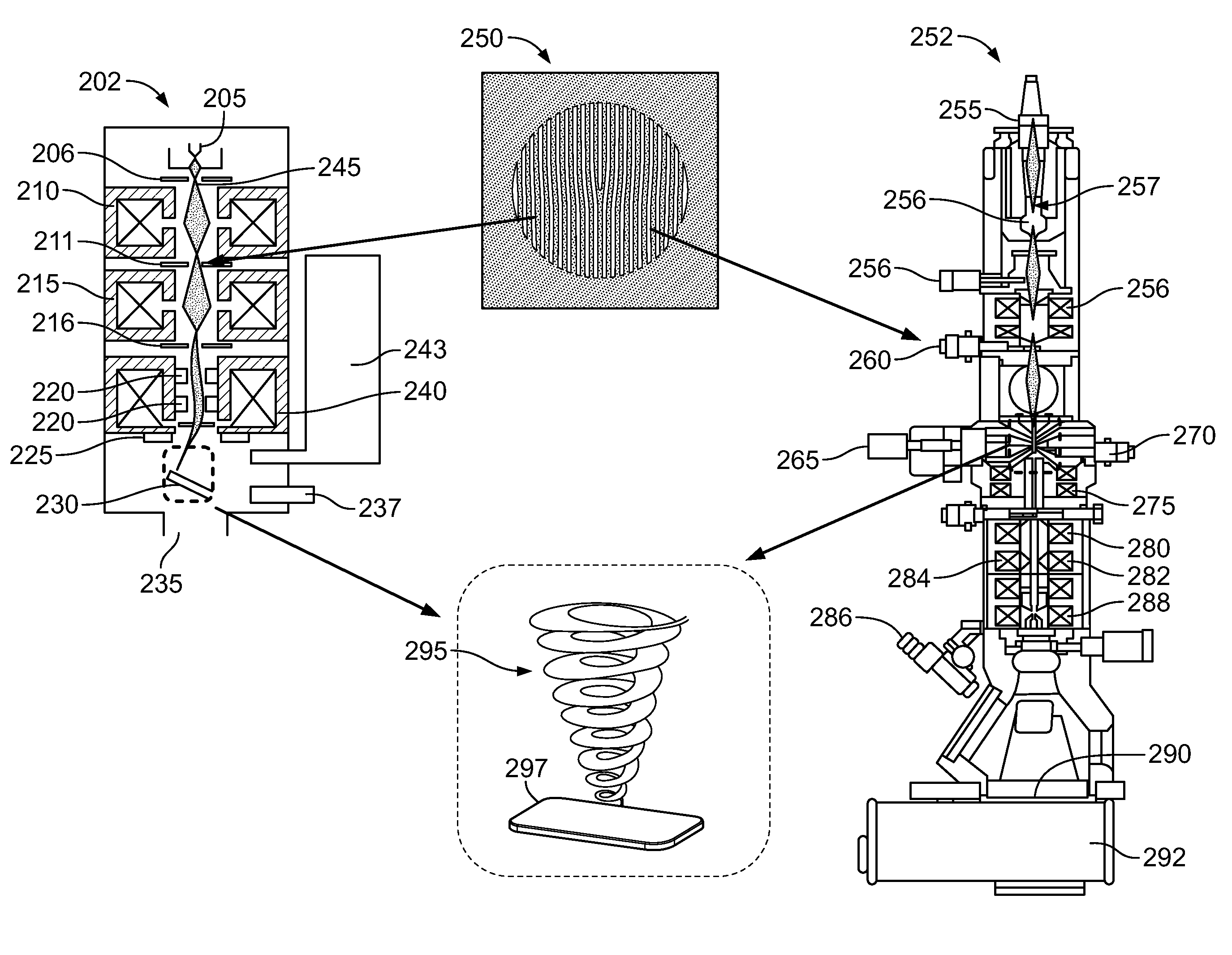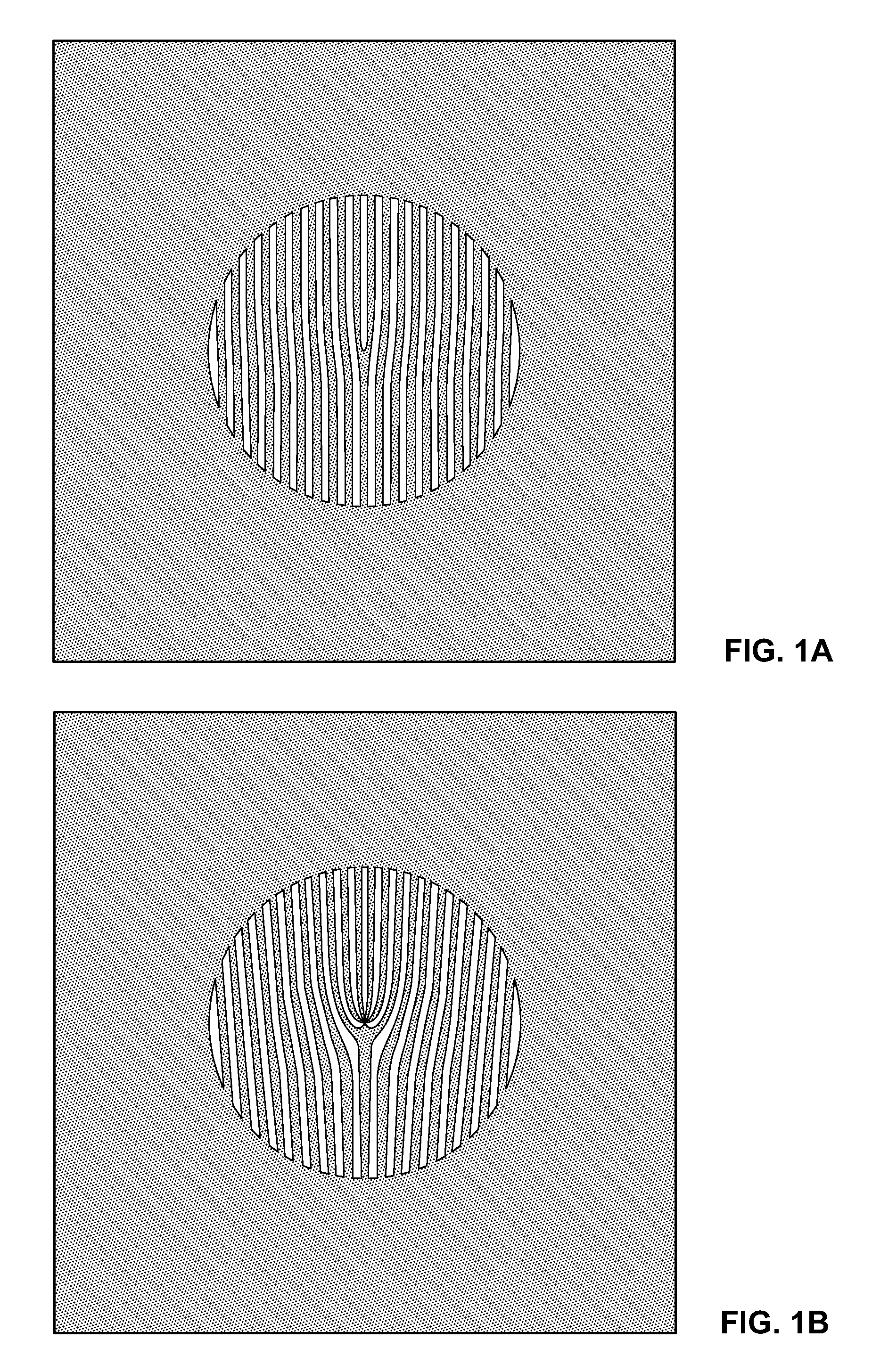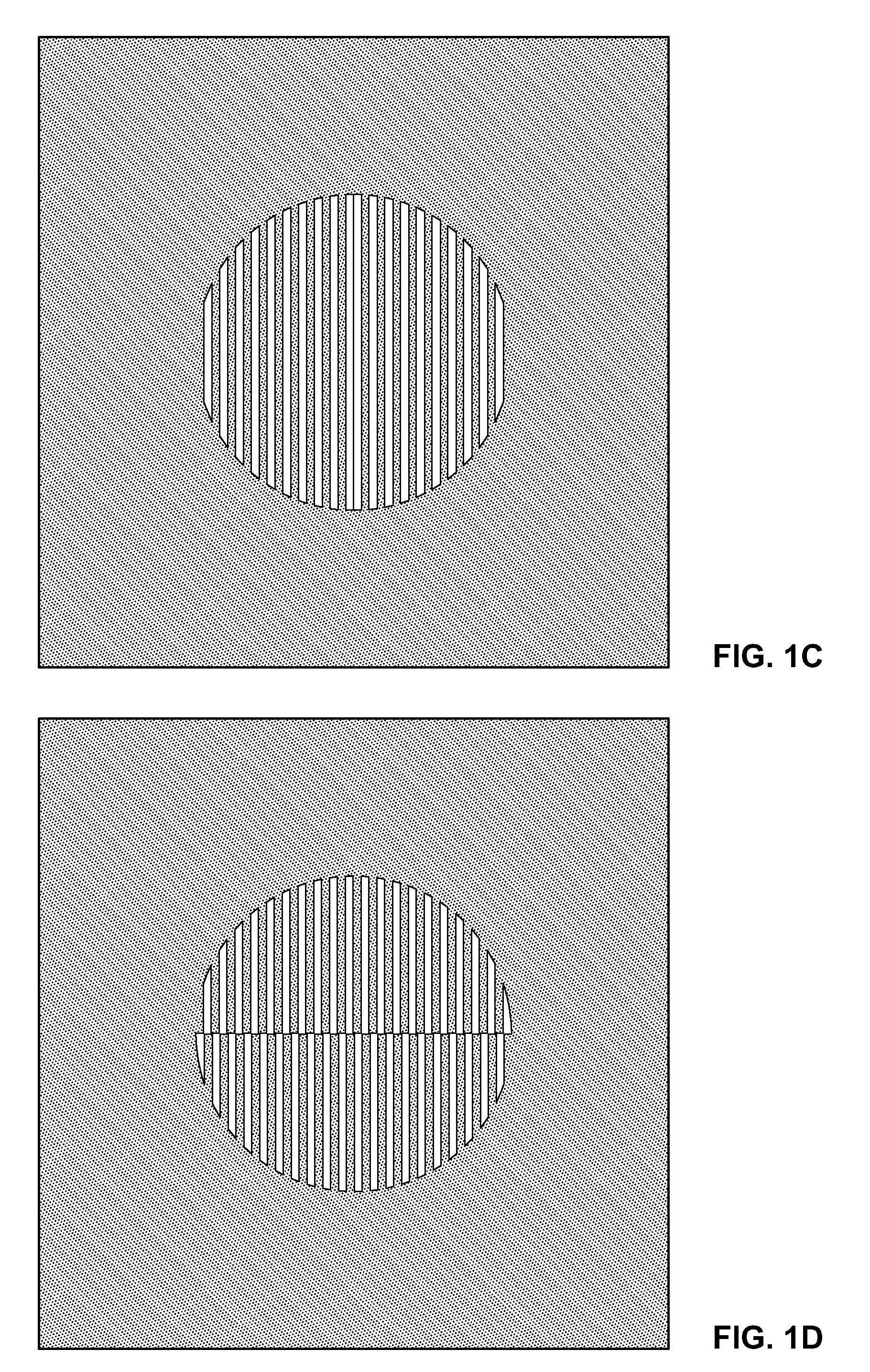System and method for producing and using multiple electron beams with quantized orbital angular momentum in an electron microscope
a technology of orbital angular momentum and electron microscope, which is applied in the field of electron beam production, can solve the problems of difficult to produce quantized phase dislocations (vortices) with integer helicity, the placement of electron optical elements after specimens, and the widespread use of phase plate-enhanced electron microscopy
- Summary
- Abstract
- Description
- Claims
- Application Information
AI Technical Summary
Benefits of technology
Problems solved by technology
Method used
Image
Examples
Embodiment Construction
[0030]A system and method are described for producing electron probe beams with engineered phase dislocations in electron-producing imaging instruments, including electron microscopes. These beams may be used to provide information about a specimen that may not otherwise be available. Different phase dislocations may result in various unique beam interactions with a specimen.
[0031]The system and method of the present disclosure differ from the prior art in that they incorporate a scanned electron probe arrangement. Accordingly, phase dislocations may be imprinted onto the electron beam before the specimen, as opposed to after the specimen like the prior art. The present system and method also incorporate use of a diffraction hologram, as opposed to a refractive hologram. The techniques described herein provide for practical and useful electron optical elements that are capable of being reliably, reproducibly and economically manufactured. These techniques are also robust and long-la...
PUM
 Login to View More
Login to View More Abstract
Description
Claims
Application Information
 Login to View More
Login to View More - R&D
- Intellectual Property
- Life Sciences
- Materials
- Tech Scout
- Unparalleled Data Quality
- Higher Quality Content
- 60% Fewer Hallucinations
Browse by: Latest US Patents, China's latest patents, Technical Efficacy Thesaurus, Application Domain, Technology Topic, Popular Technical Reports.
© 2025 PatSnap. All rights reserved.Legal|Privacy policy|Modern Slavery Act Transparency Statement|Sitemap|About US| Contact US: help@patsnap.com



